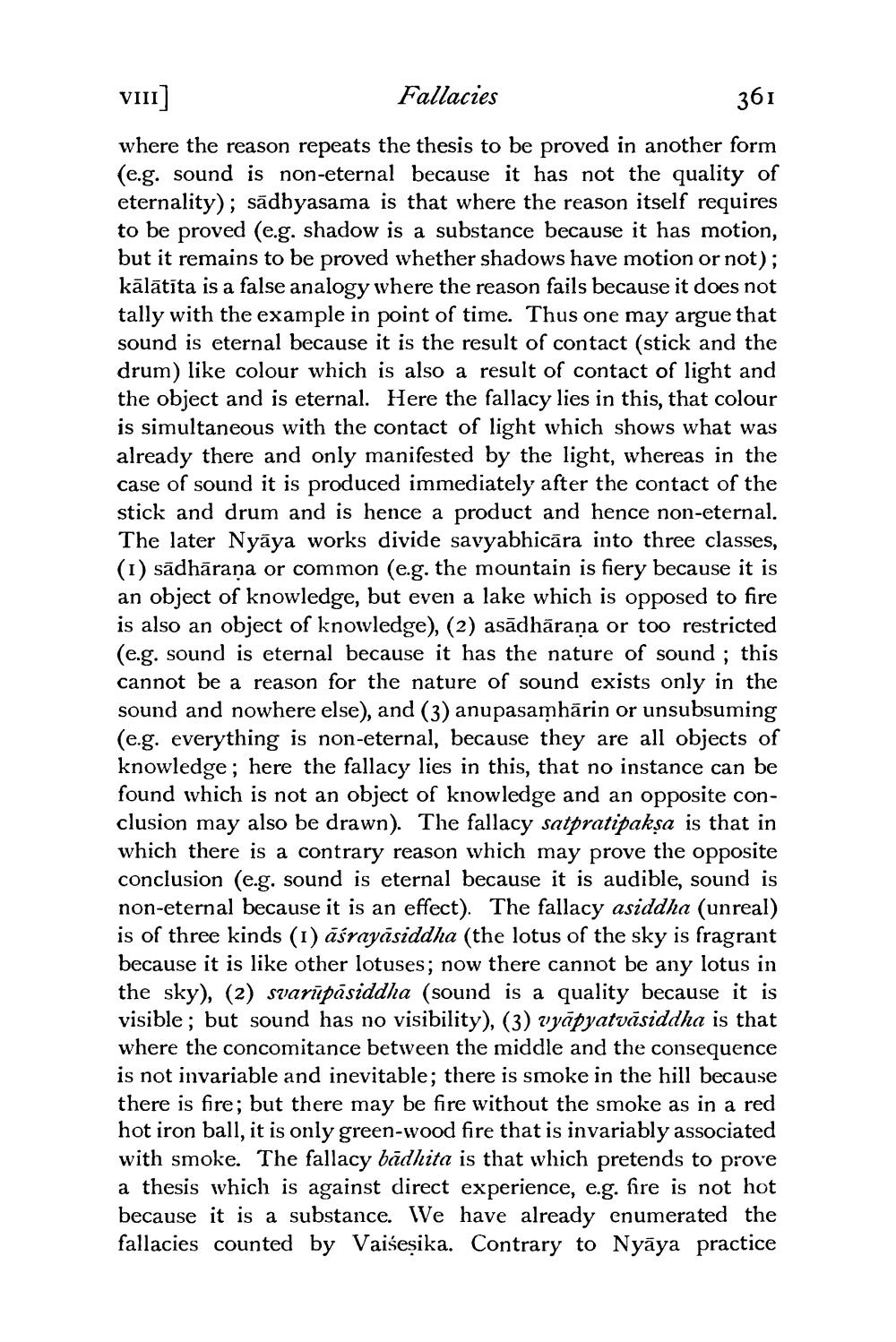________________
VIII]
Fallacies
361
where the reason repeats the thesis to be proved in another form (e.g. sound is non-eternal because it has not the quality of eternality); sādhyasama is that where the reason itself requires to be proved (e.g. shadow is a substance because it has motion, but it remains to be proved whether shadows have motion or not); kālātīta is a false analogy where the reason fails because it does not tally with the example in point of time. Thus one may argue that sound is eternal because it is the result of contact (stick and the drum) like colour which is also a result of contact of light and the object and is eternal. Here the fallacy lies in this, that colour is simultaneous with the contact of light which shows what was already there and only manifested by the light, whereas in the case of sound it is produced immediately after the contact of the stick and drum and is hence a product and hence non-eternal. The later Nyāya works divide savyabhicāra into three classes, (1) sādhārana or common (e.g. the mountain is fiery because it is an object of knowledge, but even a lake which is opposed to fire is also an object of knowledge), (2) asādhāraṇa or too restricted (e.g. sound is eternal because it has the nature of sound ; this cannot be a reason for the nature of sound exists only in the sound and nowhere else), and (3) anupasamhārin or unsubsuming (e.g. everything is non-eternal, because they are all objects of knowledge; here the fallacy lies in this, that no instance can be found which is not an object of knowledge and an opposite conclusion may also be drawn). The fallacy satpratipaksa is that in which there is a contrary reason which may prove the opposite conclusion (e.g. sound is eternal because it is audible, sound is non-eternal because it is an effect). The fallacy asiddha (unreal) is of three kinds (1) āśrayāsiddha (the lotus of the sky is fragrant because it is like other lotuses; now there cannot be any lotus in the sky), (2) svarūpāsiddha (sound is a quality because it is visible; but sound has no visibility), (3) vyāpyatvāsiddha is that where the concomitance between the middle and the consequence is not invariable and inevitable; there is smoke in the hill because there is fire; but there may be fire without the smoke as in a red hot iron ball, it is only green-wood fire that is invariably associated with smoke. The fallacy bādhita is that which pretends to prove a thesis which is against direct experience, e.g. fire is not hot because it is a substance. We have already enumerated the fallacies counted by Vaišeşika. Contrary to Nyāya practice




